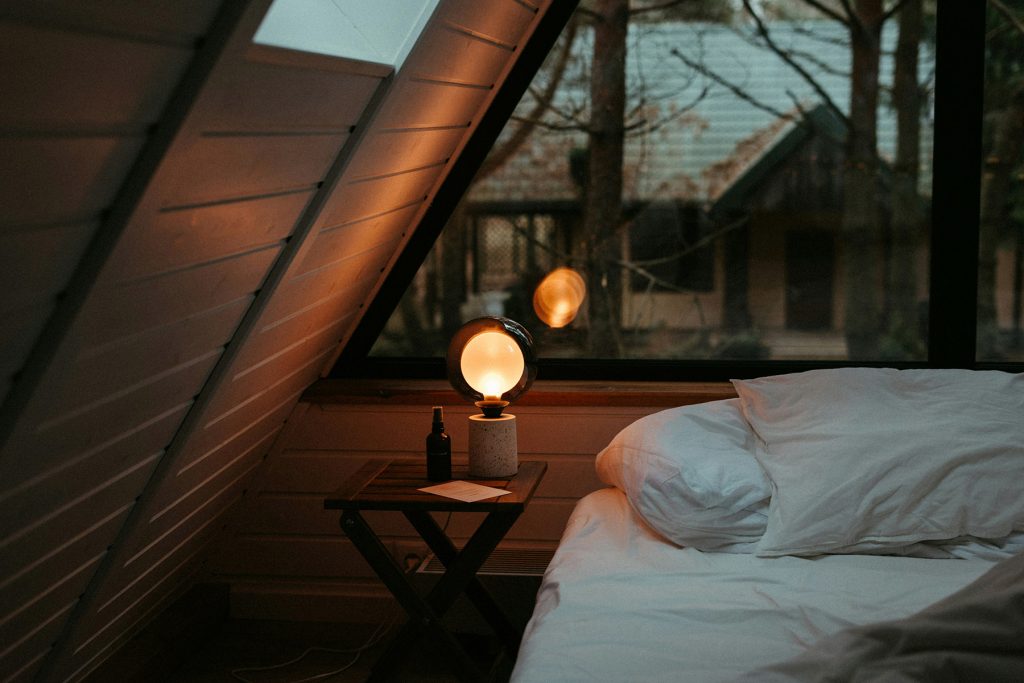Your body runs on a 24-hour internal clock known as the circadian rhythm—a biological cycle that governs when you feel alert, sleepy, hungry, or energised. At the heart of this rhythm lies one powerful environmental cue: light.
Understanding how to use light to your advantage can help you wake up more easily, sleep more deeply, and even improve your mood and productivity. In this post, we’ll break down how light influences your circadian rhythm, and offer practical ways to “hack” it for better sleep, energy, and overall health.
What Is the Circadian Rhythm?
Your circadian rhythm is a natural, internal process that repeats roughly every 24 hours. It regulates a wide range of biological functions, including:
-
Sleep-wake cycles
-
Hormone release (like melatonin and cortisol)
-
Digestion
-
Body temperature
-
Mood and cognitive function
This rhythm is heavily influenced by light exposure, particularly from natural sunlight. When your circadian rhythm is aligned with the day-night cycle, you feel more alert during the day and naturally sleepy at night.
The Science Behind Light and Your Body Clock
The key player in this light-response system is a part of the brain called the suprachiasmatic nucleus (SCN), located in the hypothalamus. The SCN acts like a master clock, receiving signals from your eyes—specifically, a type of cell that detects light (even if your eyes are closed).
When light enters the retina, it tells the SCN:
-
“It’s daytime—stay alert.”
-
In the absence of light, the body interprets: “It’s night—start winding down.”
Based on this input, the SCN controls the release of key hormones, most notably:
-
Cortisol in the morning (to increase alertness)
-
Melatonin in the evening (to promote sleepiness)
How Modern Life Disrupts Your Rhythm
In nature, the sun would be your only major source of light. But modern lifestyles have introduced artificial lighting, screens, and inconsistent sleep patterns that can disrupt your circadian rhythm and lead to:
-
Difficulty falling or staying asleep
-
Fatigue during the day
-
Brain fog and mood swings
-
Increased risk of insomnia, depression, or metabolic issues
Excessive blue light exposure in the evening (from phones, tablets, and TVs) is particularly harmful, as it tricks your brain into thinking it’s still daytime—delaying melatonin release and pushing your body clock later.
How to Hack Your Circadian Rhythm with Light
The good news? You can reset and optimise your body clock through strategic light exposure. Here’s how:
1. Get Bright Light Within 30–60 Minutes of Waking
Exposure to bright natural light in the morning is the most powerful way to anchor your circadian rhythm.
Why it works:
It signals to your brain that the day has begun, suppresses melatonin, boosts cortisol naturally, and starts the countdown to your next melatonin release in the evening.
How to do it:
-
Spend at least 10–30 minutes outside shortly after waking (even on cloudy days)
-
Sit near a bright window if going outside isn’t possible
-
Avoid wearing sunglasses during this time unless necessary
2. Minimise Light Exposure in the Evening
To help your body prepare for sleep, reduce light exposure 1–2 hours before bed.
Tips:
-
Use warm, dim lighting in your home
-
Avoid screens or enable night mode on devices
-
Try blue light blocking glasses if you must use electronics
-
Consider using red or amber light bulbs in your bedroom or bathroom
3. Keep Your Sleep Environment Dark
Even low levels of light during sleep can interfere with melatonin production and reduce sleep quality.
Optimise your sleep environment by:
-
Using blackout curtains
-
Turning off all lights and electronics
-
Removing digital alarm clocks or covering them
-
Wearing a sleep mask if total darkness isn’t possible
4. Be Consistent with Your Sleep and Wake Times
Light cues are most effective when your sleep schedule is regular. Try to:
-
Wake up and go to bed at roughly the same time each day, even on weekends
-
Align your bedtime with your natural sleep window, which is often 9–11pm for most adults
5. Use Light Therapy for Circadian Disorders or SAD
If you struggle with Delayed Sleep Phase Disorder, shift work, or Seasonal Affective Disorder (SAD), a light therapy box can help.
What to do:
-
Use a 10,000-lux lightbox for 20–30 minutes in the morning
-
Ensure it’s placed at eye level but angled slightly downward
-
Avoid looking directly at the light
Consult a healthcare provider before using light therapy, especially if you have eye conditions or bipolar disorder.
6. Respect Natural Light Cycles While Travelling
Jet lag is the result of your circadian rhythm being out of sync with your new environment. You can mitigate this by:
-
Shifting your light exposure before travel (gradually adjusting bedtime)
-
Seeking bright light in the new time zone during morning hours
-
Avoiding late-night exposure, especially on flights
Apps like Timeshifter can guide you through this process.
Benefits of Circadian Alignment Through Light
When you use light strategically, you can:
-
Fall asleep faster and wake up more refreshed
-
Improve mood, mental clarity, and emotional resilience
-
Reduce the risk of sleep disorders and depression
-
Enhance metabolism and immune function
-
Increase daytime energy and productivity
Final Thoughts: Let Light Work for You
In a society that runs 24/7, our bodies still crave the rhythms of nature. Learning how to “hack” your circadian rhythm through light exposure is one of the simplest and most effective ways to enhance your sleep and wellbeing.
A few small changes—like stepping outside in the morning, dimming your lights in the evening, or reducing screen time before bed—can have a profound impact on how you feel, function, and sleep.
Let your day be guided by the sun—not your screen.
